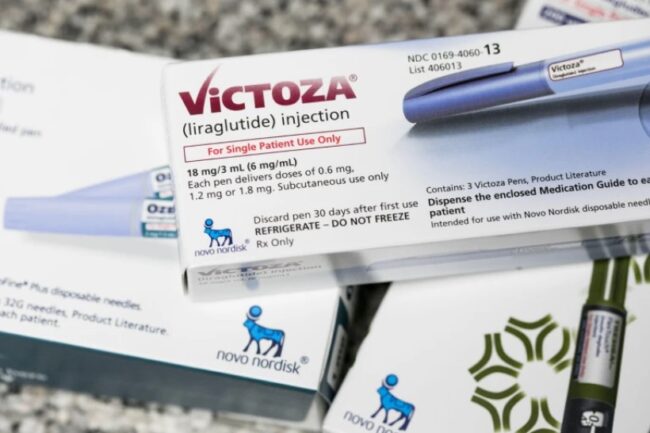Scientists identify brain area harbouring two groups of neurons: one for pre-meal sensations of fullness, and one for post-meal satiety… even before
Scientists identify brain area harbouring two groups of neurons: one for pre-meal sensations of fullness, and one for post-meal satiety… even before one bite of food.
People taking Wegovy and similar weight-loss drugs often feel full, even when they sit down to a meal and haven’t taken a single bite. Now, scientists have found a brain region that is involved in this effect, and that helps to cause the same sensation without the use of weight-loss drugs, reported Nature.com.

In a paper published in Science, scientists describe two groups of neurons associated with feeling full:
- One for pre-meal fullness
- And one for post-meal fullness
The study also shows that the blockbuster obesity drugs act on the ‘fullness’ neurons, but more research is needed to determine the treatments’ mechanism, the authors say, reported Nature.com.

The identification of these two populations of neurons is the paper’s key contribution, says Allison Shapiro, a specialist in neurodevelopment at the University of Colorado Anschutz Medical Campus in Aurora, who was not involved in the research. It fits in with the anecdotal idea that there are two types of fullness:
- One that is anticipatory
- And another that arises in response to eating
“Based on what they’ve found, it appears that this specific region of the hypothalamus is responsible for both, which is pretty cool”, said Shapiro.

The latest obesity medications mimic a hormone called glucagon-like peptide 1 (GLP-1), which controls blood-sugar levels and acts on the brain to curb appetite. The GLP-1 drugs include semaglutide, sold as Ozempic for type 2 diabetes (T2D) and as Wegovy for weight loss, and liraglutide, sold as Saxenda for weight loss and as Victoza for T2D. Both are manufactured by Novo Nordisk, based in Bagsværd, Denmark, reported Nature.com.
Study co-author Hyung Jin Choi, a neuroscientist at Seoul National University, experienced the effects of liraglutide firsthand when he took the drug for obesity. “I felt a huge increase in fullness when I saw and smelled food, even before I started eating,” he says. This motivated him to dig into the feeling of pre-meal fullness.
He and his colleagues recruited people with obesity and asked them to report their level of satiation at three stages:
- Before exposure to food
- While looking at a delicious plate of Korean fried chicken but before eating it
- And after eating it

People taking liraglutide felt full even before exposure to food, but this feeling grew when they were shown food and again after they’d eaten. The findings demonstrate that Choi isn’t the only one taking the drug who feels full at the mere sight of food, a feeling that the team named ‘preingestion satiation’, reported Nature.com.
By contrast, for participants who weren’t taking the drug, satiation decreased at the sight of the fried chicken and didn’t rise again until after they’d eaten. To identify the area of the brain that is responsible for these sensations, researchers homed in on the dorsomedial hypothalamus (DMH). Its neurons have GLP-1 receptors, allowing GLP-1 to act directly on this brain region.

The researchers artificially stimulated DMH neurons in mice that were in the middle of a meal and found that the animals stopped eating immediately. When these neurons were chronically activated, mice ate less; when they were chronically inhibited, mice ate more. The results suggest that the region plays a central part in satiation, reported Nature.com.
Karolina Skibicka, a neuroscientist at Penn State in University Park and the University of Gothenburg, Sweden, notes that other studies have found no such changes in feeding behaviour after manipulation of GLP-1 receptors in this brain area. One possible explanation might be related to the two neuronal populations in the DMH discovered by the authors.

“We tend to think of GLP-1-receptor-expressing neurons in a given brain area as this homogeneous population playing the same role,” says Skibicka. “This paper is showing that that’s clearly not true. It’s just one brain area, but GLP-1 receptors on neurons are doing different things there”, as reported by Nature.com.
All Credit To: Nature.com



COMMENTS